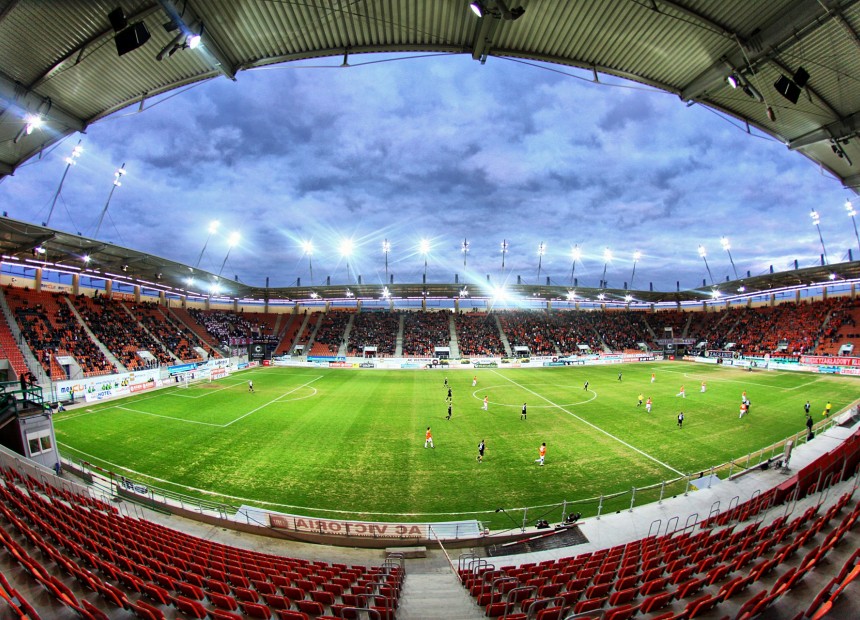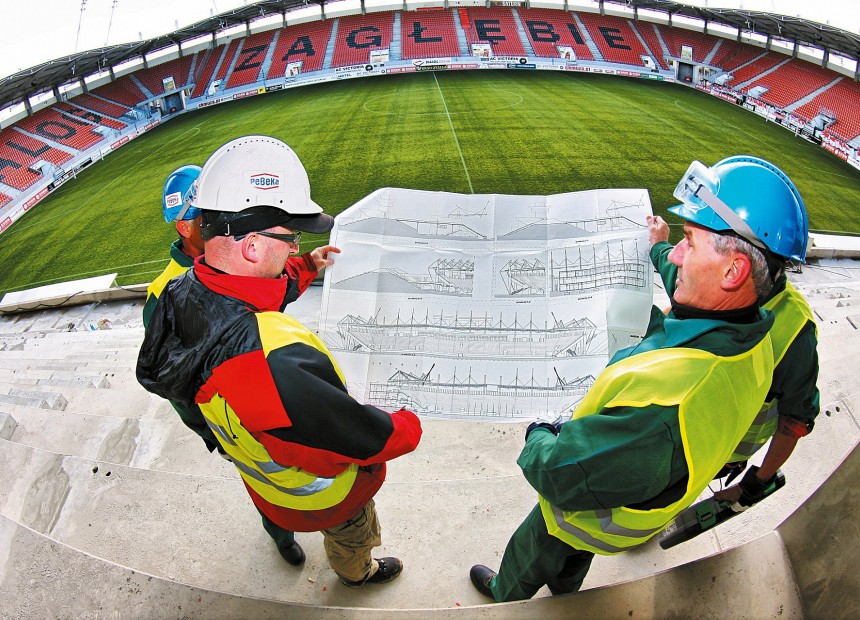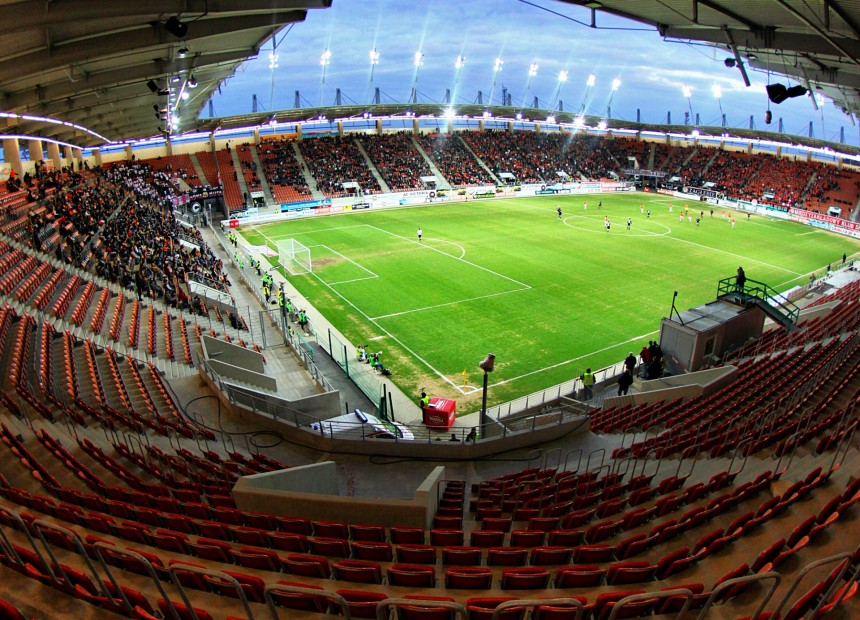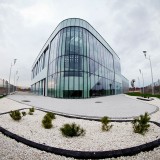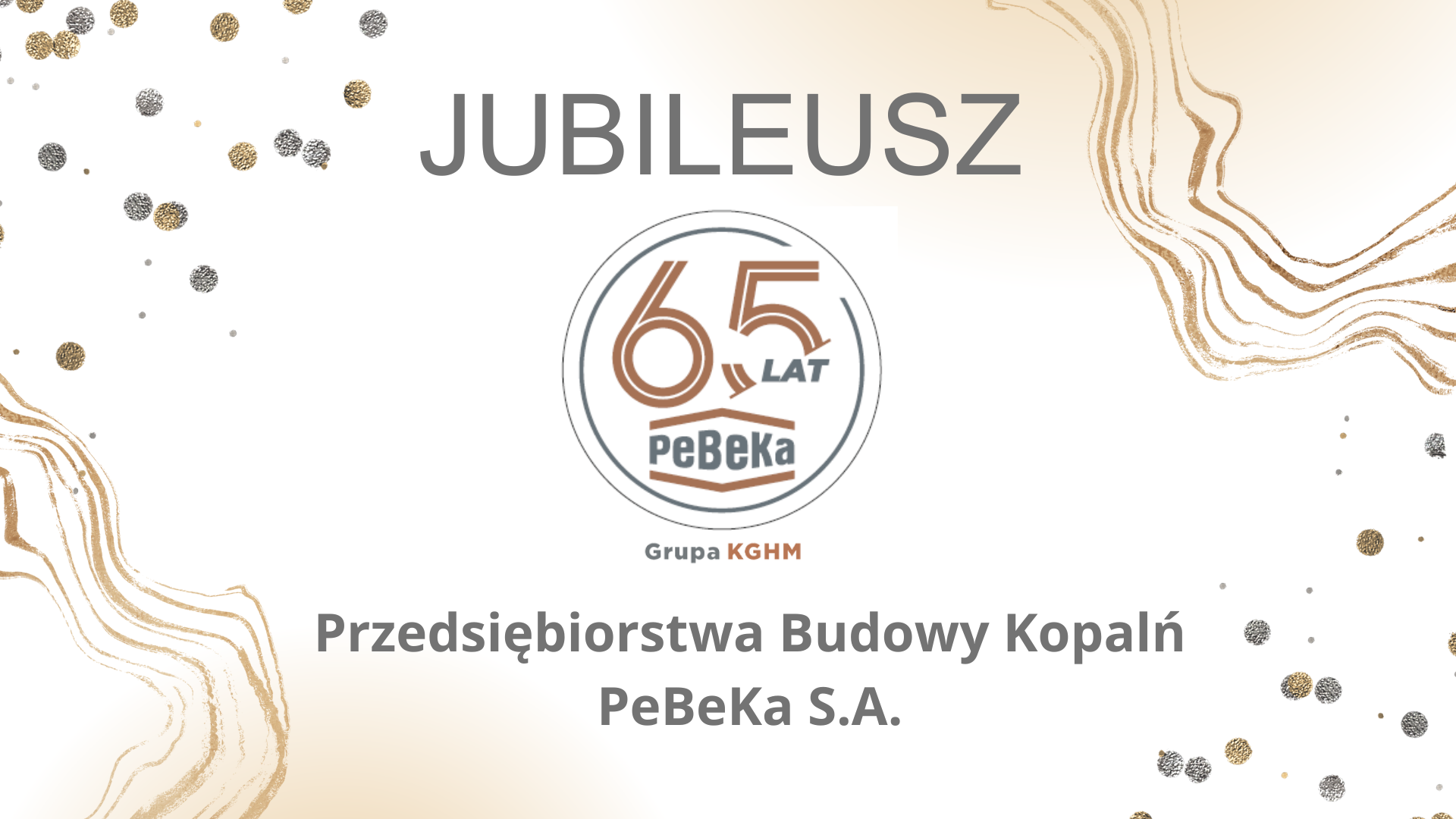The football stadium of the Zagłębie Lubin club, with the surface area of 6.48 ha, for 16 100 spectators. The main building has a slab-column structure. The foundations of the stands and the entry to the stands have a reinforced concrete monolithic structure. A part of the stadium structure is made of prefabricated reinforced concrete elements at 10.10 m centres.
The construction of the Zagłębia Lubin stadium
Investor: Zagłębie Lubin S.A.
Time of project execution: 2007-2010
Additional technical data:
- The structural elements of the roof are made of HEA 800 steel I-shaped sections suspended on two rows of cable stays and joined with purlins covered with box profile sheets constituting
- The facility is equipped with an early fire detection and alarm, fire brigade alarm, intruder alarm, access control, smoke and heat removal, monitoring, BMS, telecommunication, and public announcement systems
- Before the commencement of the project PeBeKa had conducted detailed geological examinations of the ground (to the depth of 20 m) in the area of the planned foundations
- Dimensions of the football field: 105 x 68 m;
- Steel structure of the roof: 520 tonnes of structural steel
Location
Poland, dolnośląskie Province,
Lubin, Marii Skłodowskiej-Curie 98 Street
Project outline
The facility was erected at the site of the former Stadium of the Miners’ Sports Centre. This project was of particular importance for the inhabitants of Lubin and the fans of the KGHM Zagłębie Lubin sports club as it was not the modernisation of the old stadium, but the construction of a completely new sports arena.
It is consistent with PZPN guidelines and UEFA regulations for stadiums of Category 3. The arena can be used successfully as a place for football matches, including European football cup meetings, as well as various other mass events. Thanks to this project, PeBeKa acquired new experience and competences in constructing sports facilities in accordance with international standards.
Greatest challenges
- Performing construction works during the football season and weekly markets held around the stadium
- Erecting the new stadium at the site of the previous stadium
- Building the stadium in strict accordance with UEFA guidelines
Key moment
Demolishing the remaining part of the bank of the old stadium, which required changes in the building permit, the demolition of the footbridges leading to the stands, and the removal of almost 140 000 m3 of earth and concrete rubble.
